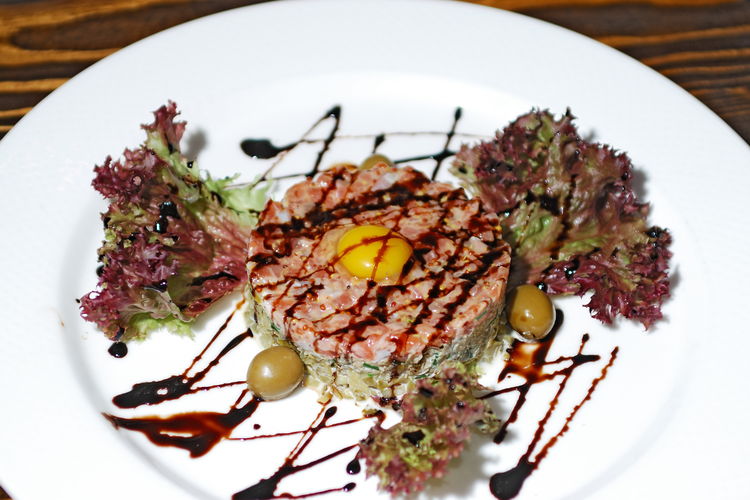
Steak Tartare: The Classic Made 4 Ways
The key to a delicious steak tartare is FRESHNESS and QUALITY. Use of fresh (NEVER FROZEN) ingredients will ensure the ultimate taste and texture.
Always add your egg yolk just before serving for a traditional finish.
Tartare is best when served cold, so if you do prepare in advance, make sure to keep chilled in the refrigerator until you serve. We recommend preparing it just before serving to keep the flavors fresh.
To save time, you can request your butcher to cut your meat for you.
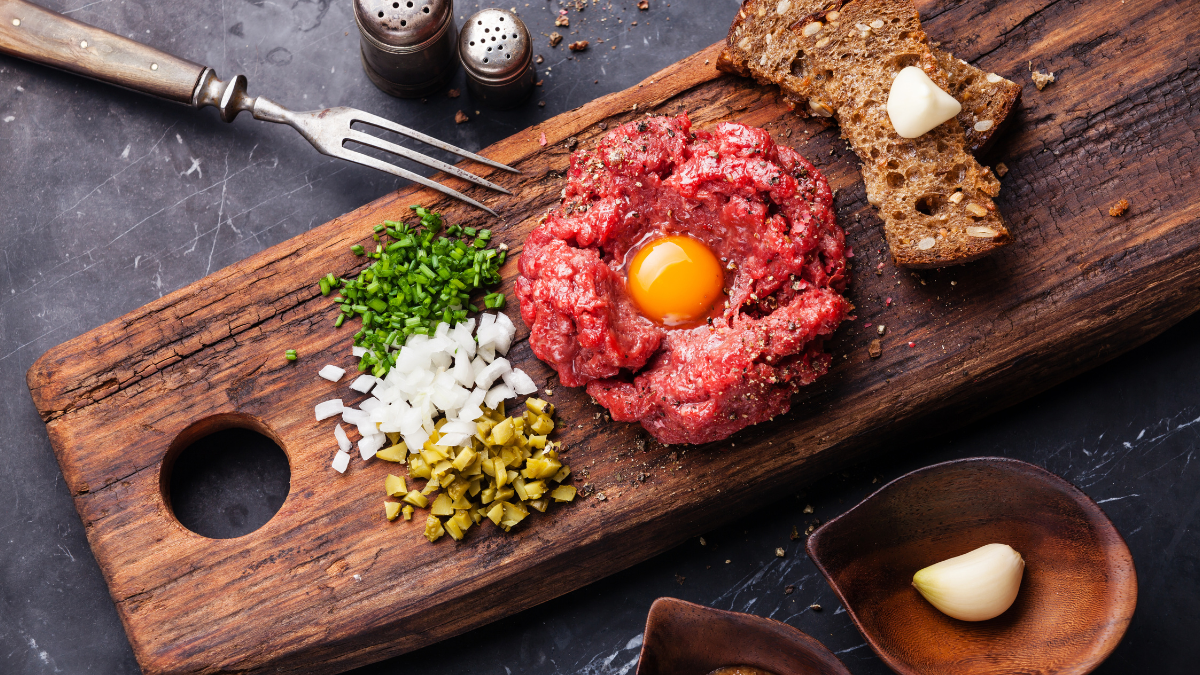
Steak Tartare 4-Ways
Jacky @ The Butcher Block
Rated 5.0 stars by 1 users
Category
Starters
Servings
2
Prep Time
30 minutes
Cook Time
0 minutes
It’s not everyone’s cup of tea…but a deliciously seasoned, Steak Tartare made with fresh ingredients can impress and indulge even the fussiest of palettes. It's no wonder this dish can be found served at high-end, fine dining restaurants the world over. The history of this dish is somewhat mysterious, drawing from a number of different cultures through different eras in time. Here’s a look at how this classic raw beef dish evolved...
The Mongolian Myth
The most popular legend surrounding steak tartare’s origins traces it back to Mongolian horsemen in the Middle Ages. As the story goes, Mongol riders under Genghis Khan softened meat by placing it under their saddles while riding. However, there’s little evidence to confirm this. What we do know is that raw meat dishes were indeed popular in Central Asia, and they likely influenced the raw dishes later found in Europe.
Eastern European Influence
The word “tartare” comes from the Tartars, a name Western Europeans used for the Mongols and Turkic people. When French chefs encountered Russian raw beef dishes, they named their adaptation "à la tartare." In the 19th century, French culinary tradition introduced the concept of preparing raw beef with garnishes, which later evolved into the tartare we know and love today.
French Refinement
The modern steak tartare was popularized in early 20th-century France. Classic French cookbooks in the early 1900s began including recipes for "beefsteak à l'Americaine," which consisted of chopped, raw beef mixed with seasonings and served with an egg yolk. In Paris, this evolved into steak tartare as we know it today: finely chopped or ground raw beef, seasoned with capers, onions, mustard, and Worcestershire sauce, often topped with an egg yolk.
Modern Popularity
Steak tartare gained international acclaim in the mid-20th century, especially in Europe and the United States. Its luxurious yet minimalist appeal made it a favorite at fine dining establishments, where it was often prepared tableside. Variations emerged, including tuna tartare in the 1980s, expanding the dish’s reach and appeal.
Today, steak tartare is enjoyed globally and comes in many creative forms, from classic French styles to modern variations with flavors from Asia, the Mediterranean, and beyond. The dish remains a symbol of culinary sophistication and raw, natural flavors.
Ingredients
-
225g fillet, beef tenderloin or sirloin
1 tbsp Dijon Mustard
1 tbsp capers, finely chopped or whole
1 small shallot, finely chopped
1 tbsp fresh parsley
1 egg yolk (optional, for traditional garnish)
Salt and freshly ground black pepper, to taste
-
½ tsp Worcestershire sprinkle
1 tbsp extra-virgin olive oil
Fresh lemon juice (optional, a few drops to taste)
-
225g fillet, beef tenderloin or sirloin
1 tbsp Soy Sauce
1 tsp sesame oil
1 tsp honey
1 tsp fresh ginger, finely grated
1 small shallot, finely chopped
1 tbsp spring onion finely chopped
1 tbsp roasted sesame seeds
Salt and freshly ground black pepper, to taste
1 egg yolk (optional, for garnish)
Microgreens or a few sprigs of cilantro, for garnish
Sliced radish and cucumber (optional, for serving)
-
225g fillet, beef tenderloin or sirloin
1 tbsp white or yellow miso paste
1 tsp soy sauce
1 tsp sesame oil
1 tbsp truffle-infused oil
1 tbsp capers, finely chopped
1 small shallot, finely chopped
1 tbsp Japanese Mayo
1 egg yolk (optional, for richness)
Salt and freshly ground black pepper, to taste
1 tsp yuzu juice (or lemon juice if yuzu isn’t available)
Zest of 1 yuzu (or lemon zest if yuzu isn’t available)
-
225g fillet, beef tenderloin or sirloin
1 tbsp sun-dried tomatoes, finely chopped
1 tbsp Kalamata olives, finely chopped
1 small shallot, finely chopped
1 tbsp fresh basil, finely chopped
1 tbsp fresh parsley, finely chopped
½ tsp dried oregano
1 tsp capers, finely chopped
1 tbsp extra-virgin olive oil
1 tsp Balsamic Vinegar
Freshly ground black pepper, to taste
Salt, to taste
Zest of 1 lemon
Juice of ½ lemon
80g Feta Cheese, crumbled
2 tbsp Fresh pesto (optional, to garnish)
CLASSIC STEAK TARTARE
EASTERN STEAK TARTARE WITH SESAME & GINGER
JAPANESE TRUFFLE-MISO STEAK TARTARE WITH YUZU ZEST
GREEK-STYLE STEAK TARTARE
Directions
For each variation, prepare your beef the same way.
Prepare the Beef: Dice the beef into small, even pieces. For best results, keep it very cold before chopping. You can also request for your friendly Butcher Block butcher to do the precision cutting for you.
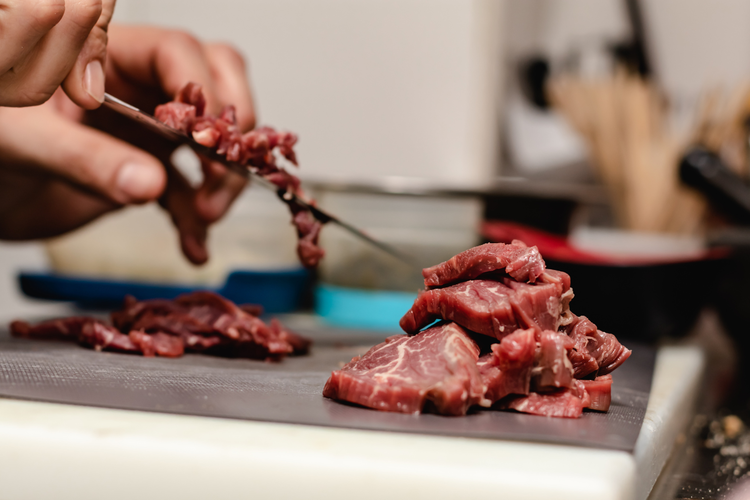
For the: CLASSIC STEAK TARTARE
Mix the Ingredients: In a separate bowl mix together the Dijon mustard, chopped capers, shallots, parsley, olive oil, Worcestershire sauce, and a few dashes of hot sauce, if using.
Gently mix this together with the meat to combine, taking care not to over-handle the meat.

Season: Add salt and freshly ground black pepper to taste. If you like a touch of acidity, add a few drops of lemon juice.
Place the tartare on a chilled plate, shaping it neatly with a ring mold if desired. Before serving top with an egg yolk for a traditional finish.
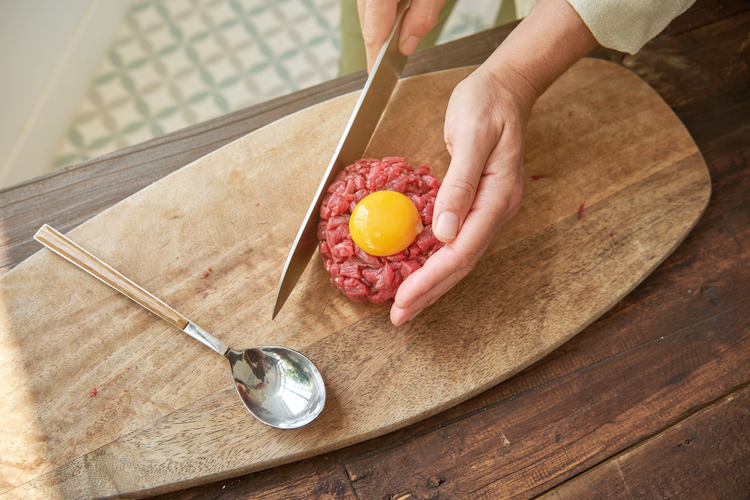
Serve immediately with toasted baguette slices or crackers for a crunchy contrast.
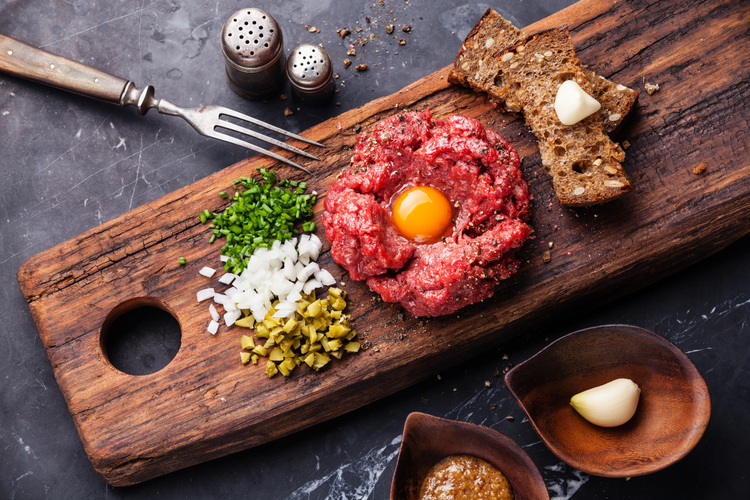
For the: EASTERN STEAK TARTARE WITH SESAME & GINGER
Mix the Ingredients: In a separate bowl whisk together the soy sauce, sesame oil, honey, and grated ginger until smooth.
Add the shallot, green onions, and toasted sesame seeds to the beef.
- Pour the sauce over and gently mix to coat the beef. Season with salt and pepper to taste, adjusting as needed.
To Serve: Place the tartare on a chilled plate, optionally using a ring mold for presentation. Top with the egg yolk if desired, and sprinkle with microgreens. Add thinly sliced radishes and cucumber on the side for a fresh and crunchy contrast.
- Serve immediately with with rice crackers or seaweed crisps for a satisfying crunch.
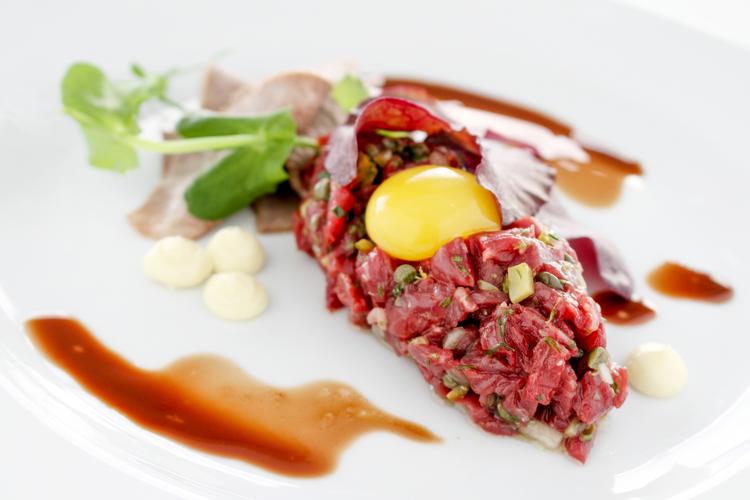
For the: JAPANESE TRUFFLE-MISO STEAK TARTARE WITH YUZU ZEST
Make the Miso-Truffle Sauce: In a separate small bowl, mix the miso paste, soy sauce, sesame oil, truffle oil, capers, shallot and Japanese mayo until smooth and well-combined.
Pour the sauce over the diced beef and gently fold to coat each piece. Season with salt and freshly ground black pepper to taste.
Drizzle in the yuzu juice and sprinkle the yuzu zest over the mixture. Lightly toss again to distribute the flavors evenly.
Place the tartare on a chilled plate, shaping it neatly with a ring mold if desired. Before serving top with an egg yolk for a traditional finish.
Drizzle with olive oil and garnish with microgreens and optional shaved truffle for some added luxury. Serve immediately with toasted baguette and rice crisps.
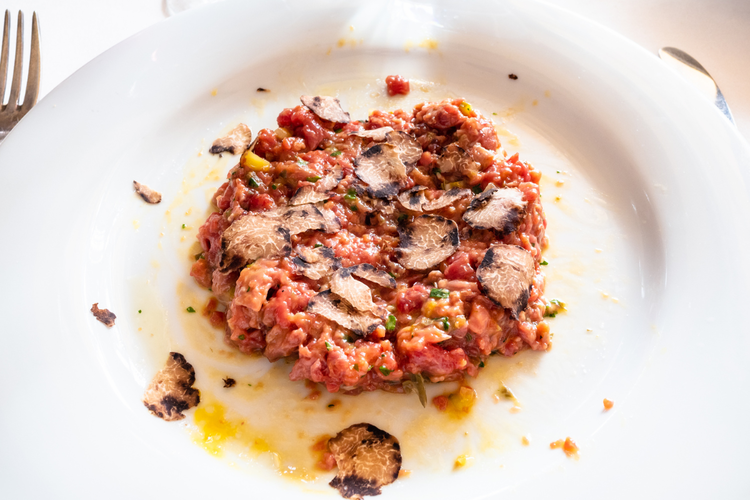
For the: GREEK-STYLE STEAK TARTARE
In a mixing bowl, combine the chopped sun-dried tomatoes, olives, shallot, basil, parsley, and capers. Add the olive oil, mixing to blend the flavors.
Add the diced beef to the mixture and toss gently to coat the beef evenly. Add salt and pepper to taste.
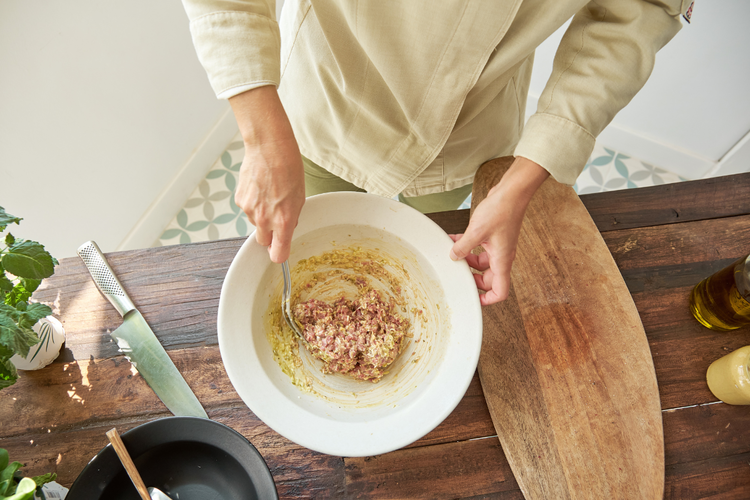
Add the lemon zest and juice, folding gently to incorporate a hint of brightness.
Arrange a portion of tartare on each plate. For extra flair, garnish with a few olives, an optional sprinkle of feta crumbles and a drizzle of basil pesto or balsamic reduction. Serve immediately with with with crusty bread or crostini.
